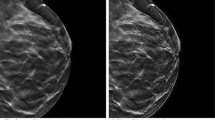Abstract
Melasma image segmentation plays a fundamental role for computerized melasma severity assessment. A method of hybrid threshold optimization between a given image and its local regions is proposed and used for melasma image segmentation. An analytic optimal hybrid threshold solution is obtained by minimizing the deviation between the given image and its segmented outcome. This optimal hybrid threshold comprises both local and global information around image pixels and is used to develop an optimal hybrid thresholding segmentation method. The developed method is firstly evaluated based on synthetic images and subsequently used for melasma segmentation and severity assessment. Statistical evaluations of experimental results based on real-world melasma images show that the proposed method outperforms other state-of-the-art thresholding segmentation methods for melasma severity assessment.







Similar content being viewed by others
References
Balkrishnan, R., McMichael, A., Camacho, F., Saltzberg, F., Housman, T., Grummer, S., et al. (2003). Development and validation of a health-related quality of life instrument for women with melasma. British Journal of Dermatology, 149(3), 572–577.
Don, H.-S. (2001). A noise attribute thresholding method for document image binarization. International Journal on Document Analysis and Recognition, 4(2), 131–138.
Grimes, P. E. (1995). Melasma: Etiologic and therapeutic considerations. Archives of Dermatology, 131(12), 1453–1457.
Handel, A., Lima, P., Tonolli, V., Miot, L., & Miot, H. (2014). Risk factors for facial melasma in women: A case–control study. British Journal of Dermatology, 171(3), 588–594.
Hunter, R. S. (1958). Photoelectric color difference meter. Journal of the Optical Society of America, 48(12), 985–993.
Jobson, D. J., Rahman, Z.-U., & Woodell, G. A. (1997). Properties and performance of a center/surround retinex. IEEE Transactions on Image Processing, 6(3), 451–462.
Kapur, J. N., Sahoo, P. K., & Wong, A. K. (1985). A new method for gray-level picture thresholding using the entropy of the histogram. Computer Vision, Graphics, and Image Processing, 29(3), 273–285.
Kim, I.-J. (2004). Multi-window binarization of camera image for document recognition. In Proceedings of the ninth international workshop on frontiers in handwriting recognition, pp. 323–327.
Korotkov, K., & Garcia, R. (2012). Computerized analysis of pigmented skin lesions: A review. Artificial Intelligence in Medicine, 56(2), 69–90.
Lee, L. K., Liew, S. C., & Thong, W. J. (2015). A review of image segmentation methodologies in medical image. In H. A. Sulaiman, M. A. Othman, M. F. I. Othman, Y. A. Rahim, & N. C. Pee (Eds.), Advanced computer and communication engineering technology, Vol. 315 of Lecture Notes in Electrical Engineering (pp. 1069–1080). Springer International Publishing.
Liang, Y., Lin, Z., Gu, J., Ser, W., Lin, F., Tay, E.Y., Gan, E.Y., Tan, V.W.D., & Thng, T.G. (2015). Melasma image segmentation using extreme learning machine. In Proceedings of ELM-2014 Volume 2, Springer, 2015, pp. 369–377.
Li, C., Xu, C., Gui, C., & Fox, M. D. (2010). Distance regularized level set evolution and its application to image segmentation. IEEE Transactions on Image Processing, 19(12), 3243–3254.
Maglogiannis, I., & Doukas, C. N. (2009). Overview of advanced computer vision systems for skin lesions characterization. IEEE Transactions on Information Technology in Biomedicine, 13(5), 721–733.
Moghaddam, R. F., & Cheriet, M. (2010). A multi-scale framework for adaptive binarization of degraded document images. Pattern Recognition, 43(6), 2186–2198.
Niblack, W. (1985). An introduction to digital image processing. Copenhagen: Strandberg Publishing Company.
Otsu, N. (1975). A threshold selection method from gray-level histograms. Automatica, 11(285–296), 23–27.
Pal, N. R., & Pal, S. K. (1993). A review on image segmentation techniques. Pattern Recognition, 26(9), 1277–1294.
Pandya, A. G., Hynan, L. S., Bhore, R., Riley, F. C., Guevara, I. L., Grimes, P., et al. (2011). Reliability assessment and validation of the Melasma Area and Severity Index (MASI) and a new modified MASI scoring method. Journal of the American Academy of Dermatology, 64(1), 78–83.
Pham, D. L., Xu, C., & Prince, J. L. (2000). Current methods in medical image segmentation. Annual Review of Biomedical Engineering, 2(1), 315–337.
Pirie, W. (1988). Spearman rank correlation coefficient. New York: Wiley Online Library.
Robertson, A. R. (1977). The CIE 1976 color-difference formulae. Color Research & Application, 2(1), 7–11.
Sauvola, J., & Pietikäinen, M. (2000). Adaptive document image binarization. Pattern Recognition, 33(2), 225–236.
Sheth, V. M., & Pandya, A. G. (2011). Melasma: A comprehensive update. Journal of the American Academy of Dermatology, 65(4), 689–714.
Silveira, M., Nascimento, J. C., Marques, J. S., Marçal, A. R., Mendonça, T., Yamauchi, S., et al. (2009). Comparison of segmentation methods for melanoma diagnosis in dermoscopy images. IEEE Journal of Selected Topics in Signal Processing, 3(1), 35–45.
Tamega, Ad, Miot, L., Bonfietti, C., Gige, T., Marques, M., Miot, H., et al. (2013). Clinical patterns and epidemiological characteristics of facial melasma in Brazilian women. Journal of the European Academy of Dermatology and Venereology, 27(2), 151–156.
Tay, E., Gan, E., Tan, V., Lin, Z., Liang, Y., Lin, F., et al. (2015). Pilot study of an automated method to determine Melasma Area and Severity Index. British Journal of Dermatology, 172(6), 1535–1540.
Wen, W., He, C., Zhang, Y., & Fang, Z. (2015). A novel method for image segmentation using reaction-diffusion model. Multidimensional Systems and Signal Processing. doi:10.1007/s11045-015-0365-0.
Acknowledgments
We wish to acknowledge the funding support by A*STAR-NHG-NTU Skin Research Grant 2014 (SRG\(\backslash \)14011).
Author information
Authors and Affiliations
Corresponding author
Rights and permissions
About this article
Cite this article
Liang, Y., Sun, L., Ser, W. et al. Hybrid threshold optimization between global image and local regions in image segmentation for melasma severity assessment. Multidim Syst Sign Process 28, 977–994 (2017). https://doi.org/10.1007/s11045-015-0375-y
Received:
Revised:
Accepted:
Published:
Issue Date:
DOI: https://doi.org/10.1007/s11045-015-0375-y




